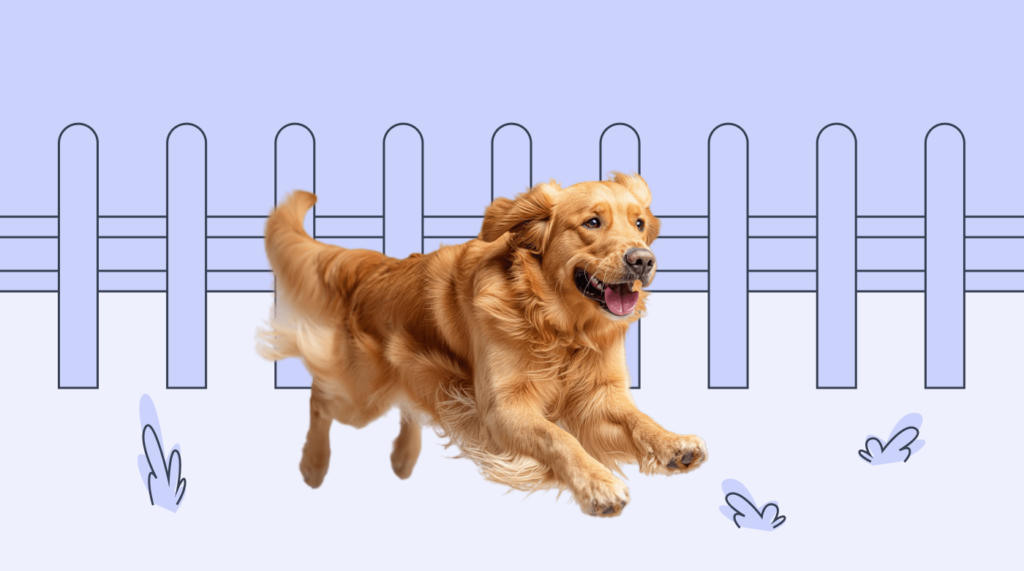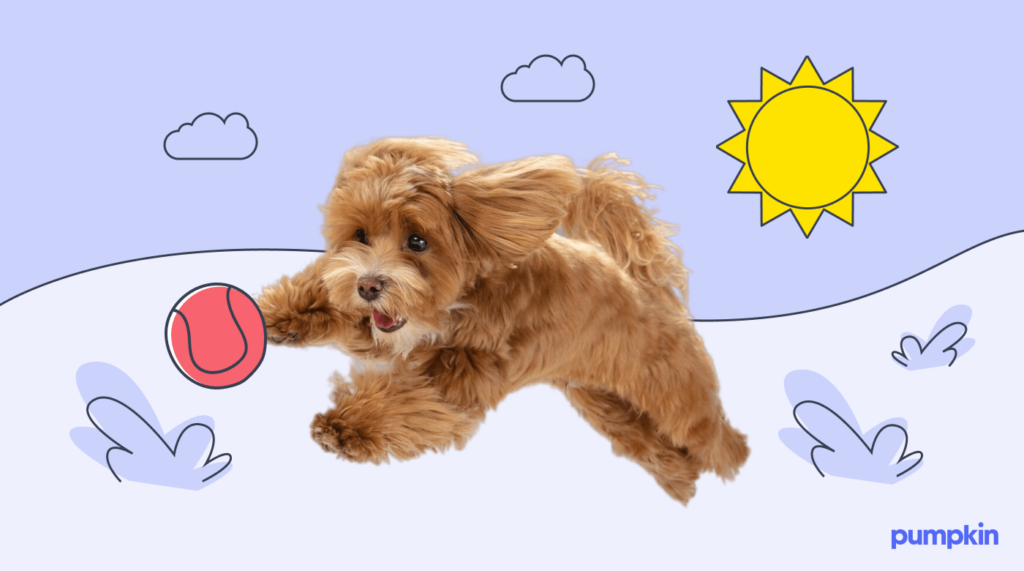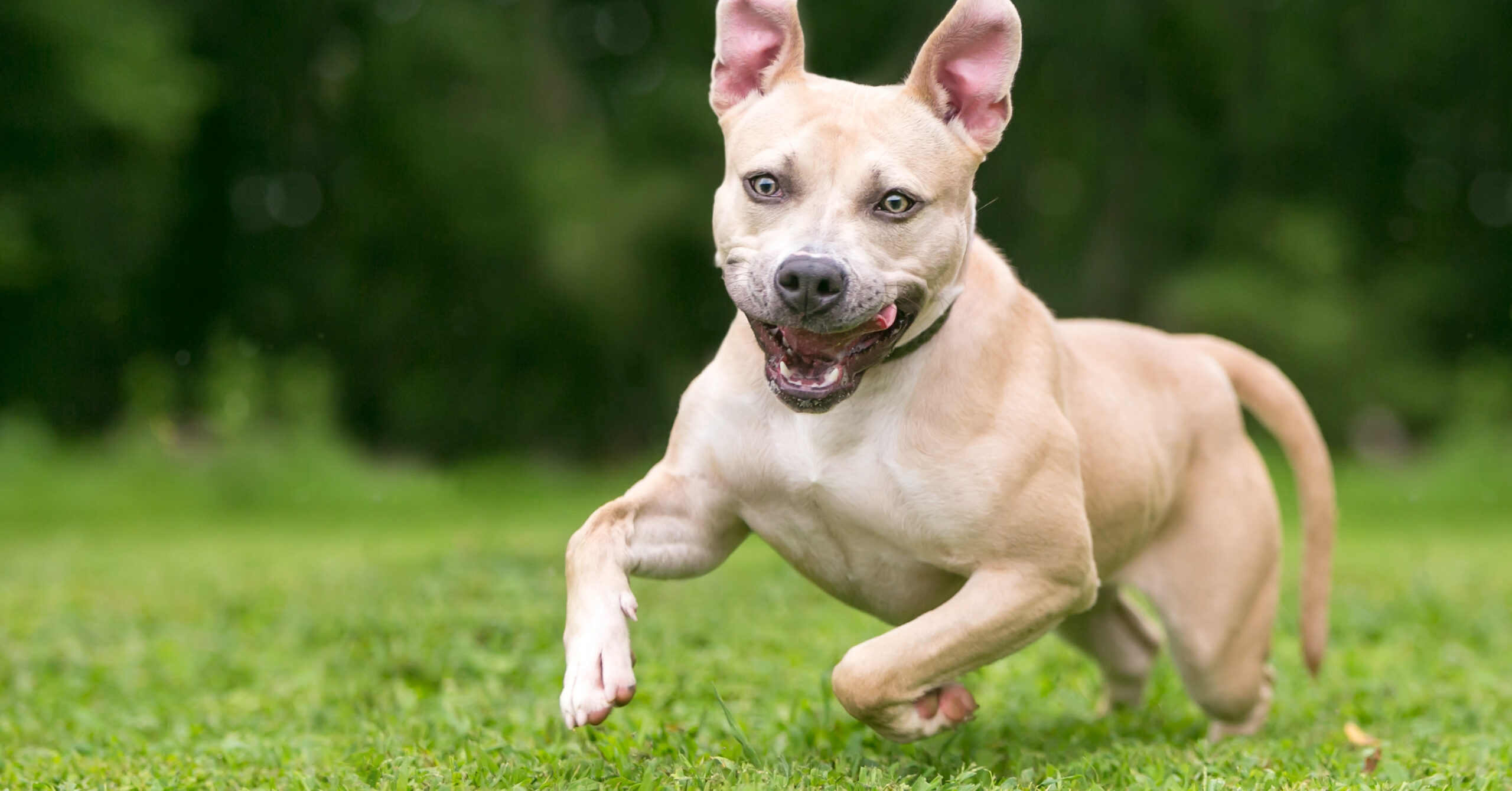Key points
- The technical name for dog zoomies is “frenetic random activity periods” (FRAPs).
- FRAPs are normal, but excessive zoomies can be a sign of something more serious.
- Don’t try to stop your dog mid-zoom. The playful behavior will usually stop on its own after a few minutes.
Is it a bird? Is it a plane? No, it’s a dog with the zoomies!
When your pup gets stuck in turbo mode and starts running around in circles, you may be wondering what’s up. Don’t panic — your dog isn’t glitching. These moments are called frenetic random activity periods, aka “the zoomies.”
A mix of physical and emotional factors can cause these sudden bursts of energy, and they usually aren’t a cause for alarm. All you need to do is get out of the way. However, the zoomies can also be a sign that your dog is feeling anxious or understimulated.
Want to know more about FRAPs? Read on to learn why dogs get the zoomies. You’ll also learn tips to keep your dog mentally stimulated.
What are dog zoomies?
Frenetic random activity period (FRAP) is the technical name for what pet parents affectionately call “zoomies.”
You know your dog is in the middle of a FRAP when you notice the following behavior:
- Their eyes are wide open — due to joy, not fear
- Their tongue is sticking out
- They’re running at top speed
- They’re going around in circles
- They’re leaping onto — or even over — items around the house
When your dog has excess energy, feels overstimulated, or is experiencing big feelings, they need a way to let off steam. To rebalance, they may start running around frenetically, usually in circles. They could race around the living room or the entire perimeter of the dog park.
While it may seem odd, this is normal behavior in the animal world. Dogs aren’t the only animals that get the zoomies — cats, horses, rabbits, and even wild animals can get these sudden bursts of energy.
As dogs get older, this behavior can become less frequent. However, whether your dog stops zooming and when depends on their breed and personality type.
What triggers dog zoomies?
Countless dog parents have wondered, “Why do dogs get the zoomies?” While the answer varies from dog to dog, there are a few common causes.

One way or another, the trigger usually comes down to pent-up energy, either physical or mental.
They might not have had enough mental stimulation during the day. Or maybe it was a rainy day so they only had a short walk.
Or, it could be your dog’s way of doing the happy dance — they are feeling it and simply can’t contain themselves, so they zip up and down the stairs or start running in circles around the yard.
Here’s a deeper look at why your pup may be zooming:
1. Excess energy
Dogs, especially high-energy breeds, may experience zoomies to release extra energy. If your dog isn’t getting enough exercise, the zoomies may become more frequent.
If you notice your dog is zooming a lot, consider changing their daily routine. If you have time, adding 10 minutes to your morning or evening walk can help your dog stay active and burn energy.
Playtime is also good for your dog and can be as simple as throwing a ball or stick. Or, if there is an off-leash dog park in your area, consider taking them there on the weekend. Your doggo can run free, mingle with other pups, and let off some steam.
2. Excitement
Dogs often start zoomin’ when they’re excited or happy. For example, if you say “walkies” or reach for the leash, they may not be able to contain their excitement.
Getting out of the house isn’t the only reason why dogs may feel overwhelmed with happiness. When their favorite person comes home from work, it can be the highlight of their day — and enough to send them into a spin.
3. Playfulness
Dogs can’t talk, so they need to find other ways to communicate with their humans. If they crave social interaction, the zoomies may be their way of saying, “Play with me!” Frenetic activity can start in the middle of playtime, too. If your dog is having fun, running in circles can be an expression of joy during social interactions.
4. Environmental stimuli
Changes in your dog’s environment can trigger zoomies. If you move house, visit a spacious area, or let them swim in the lake, the FRAPs may begin.
If you’re taking your dog somewhere new, give them the opportunity to explore. And try not to have too many big changes at once. For example, if you are away from home for the night, make sure the dinnertime routine stays the same.

5. Circadian rhythm
Have you noticed your dog is more prone to getting the zoomies at a specific time of day? This may be due to their natural circadian rhythms.
Just like humans, dogs have a “body clock.” They spend up to 60% of the day sleeping, and the rest of the time will follow some sort of routine. For example, they might wake up at 7 a.m. and start begging for dinner at 6 p.m. And they can have heightened energy levels at zoomie o’clock!
If your dog is having trouble sleeping, talk to your veterinarian about possible remedies such as melatonin for dogs.
6. Release of tension
The zoomies can be a natural outlet for built-up emotions. If your dog is feeling stressed, a few manic laps can relieve the tension.
Animals need stress relief for different reasons. They may be showing their relief after crate time or a long car ride, or they could be anxious about a trip to the vet. Sometimes, fear or nervous energy triggers an FRAP, so your pup may be reacting to a scary experience.
7. Temperature changes
Some dogs get the zoomies due to changes in temperature. If it’s cold or they’ve just had a bath, FRAPs can be a quick and easy way for your pup to warm themselves up.

8. Bowel movements
Some dogs get the zoomies after a bowel movement. It’s not uncommon for pups to kick the grass and take off on a circular loop.
After your pet has done their business, they may feel instant relief. This can be enough to trigger the zoomies. Because dogs have scent glands on their paws, FRAPs can also be a way for them to mark their territory after peeing or pooping.
9. Pain relief
In rare cases, this behavior can be a sign that your dog is in pain. When your dog suffers a sudden, sharp pain — such as an insect sting — they might get the zoomies. Teething puppies may also spend time zooming around — when they’re not searching for a pair of shoes to chew on, of course.
If your dog is in pain, it’s best to check with your vet before giving them any unprescribed treatment.
Signs your dog is about to start zoomin’
Zoomies in dogs can start quickly and with little warning. However, a few common behaviors may come before an explosion of activity:
Play bow
A play bow is a behavior that can signal the start of a zoomie session. It’s a universal dog code that signals, “I’m friendly and want to have some fun.”
Your dog’s elbows will usually touch the ground while their tail is high, signaling they’re ready to pounce.

Sudden, repetitive movements
If your dog has a sudden burst of energy followed by a pause multiple times, they could be revving up their zoomie engine.
General buildup
Recognizing buildup is crucial. If you see your dog getting restless, they may need a good zoom around the yard.
To save your carpet or hardwood floors, open the door and let them run wild outside for a few minutes (assuming you have a fenced yard, of course).
How to keep your dog physically and mentally stimulated
If you feel like your dog is experiencing FRAPs more than normal, it could mean that they’re really happy or really bored.
As dog owners, it’s our responsibility to make sure they’re engaging in the activities they need to thrive.

Here are a few ways to keep your dog mentally and physically stimulated:
Get outside
Regular walks, playtime, and visits to the dog park all help burn off excess energy. Giving them an outlet can reduce the likelihood of random zoomies indoors. This is especially important for working and sporting dog breeds that need lots of exercise.
Remember, a tired pup = a happy pup!
Never stop training
Keep your dog mentally engaged with puzzle toys, training sessions, and interactive play.
Introducing new challenges and activities not only prevents boredom but also enhances cognitive abilities. Dog training is especially important to combat those puppy zoomies.
Provide safe play spaces
Create a designated safe space where your dog can unleash their zoomies without any obstacles, corners, or sharp objects. This could be a spacious backyard or a designated play area within your home.
Tip: If zoomies become disruptive or are a cause for concern, seek advice from a professional dog trainer or an animal behaviorist. They can assess your dog’s behavior, identify potential triggers, and offer advice.
When should dog owners be worried about zoomies?
Most of the time, this is a normal behavior and can even be a sign of a happy dog. If the FRAPs are excessive or your dog seems afraid or anxious, it is worth checking in with your vet.
Remember: Zoomies are totally normal!
This behavior isn’t a sign of a mental disorder in your pup, but you should still be aware of your dog’s energy triggers so you can brace yourself for a zoomie sesh. Whether you have a playful puppy or an older dog, pooches of all ages can display this common canine behavior.
If you find that your dog is getting the zoomies a lot, make sure they’re getting enough exercise and playtime. In this case, a visit to the vet is recommended.
Dog parents can save on eligible vet bills with Pumpkin Dog Insurance plans, which provide extensive coverage for future accidents, illnesses, and injuries. That way, you can get your dog the care they need without the bill shock.




